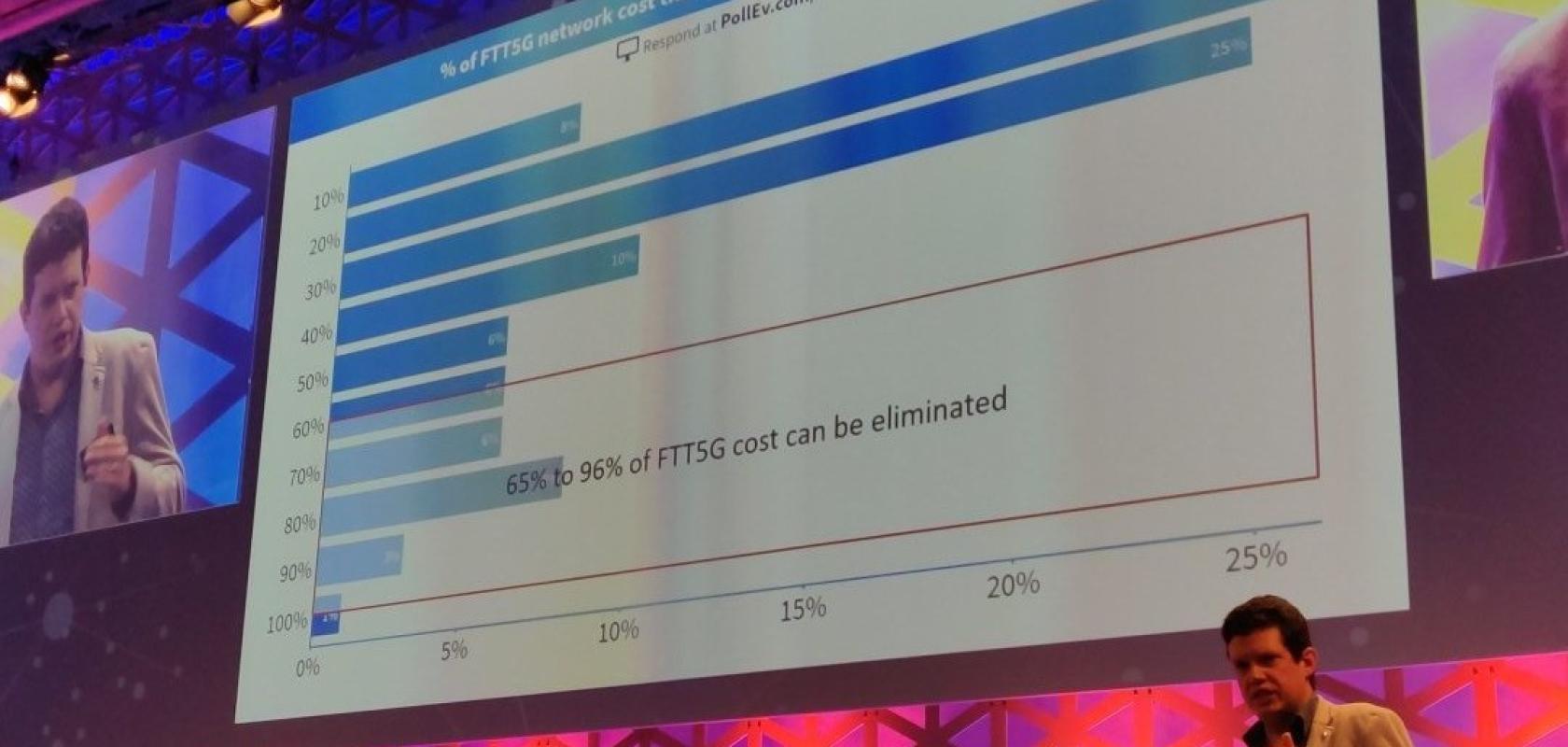A study released at the recent FTTH Conference and Exhibition in Amsterdam proposed that anticipating FTT-5G convergence at the planning stage of a network could offer significant cost savings when it comes to 5G roll out in Europe. Keely Portway finds out more
With the clue in the name of the FTTH Conference and the organisation behind it in the FTTH Council Europe, it comes as no surprise that championing fibre was the order of the day (or two) at this year’s event, which took place in Amsterdam.
In his opening keynote, Ronan Kelly, president of the FTTH Council Europe, welcomed the publication of the European Electronic Communications Code (EECC), and paid tribute to copper as a pre-cursor to fibre before setting out the strategy of the FTTH Council Europe going forward.
‘First,’ he said, ‘we have copper networks that we need to switch off. Second, we must remember that one gigabit per second is not the endgame for gigabit societies and third, that vision of 5G – we all know the vision: tens of millions of connected devices; latency that's comparable with fibre; error rates that are similar to fibre and most importantly gigabits to everybody – that vision of 5G will remain just that. Only a vision if we don't take serious action and really start to ramp up the massive fibre densification that's going to be needed.’
Copper switch-off
Looking at copper switch-off, Kelly stressed that ‘we must give up this addiction to copper,’ and the Council unveiled, during the conference, the results of a new study is had commissioned WIK to undertake. It analyses the different stages of copper switch-off in ten EU member states and identifies benefits as well as enablers, incentives, challenges and barriers to switching from copper to fibre networks.
Amongst the key findings, there was something of a mixed picture across the EU, with Estonia, Spain and Sweden leading the way. Estonia saw some 70 per cent of copper exchanges closed in 2018 with plans to remove copper access for 60 per cent of broadband subscribers by 2020.
In addition, the study found that end-users and fibre network operators alike would ultimately benefit from transition to fibre and copper switch-off in terms of reliability, energy efficiency and cost improvements. Consumers surveyed said that they were more satisfied with fibre (82 per cent happy vs 50 per cent on DSL), and they quoted higher bandwidth, a wider range of services and better value for money as key benefits. For investors meanwhile, the evidence of the study suggests that greater clarity on copper switch off could improve the business case for fibre.
All eyes on 5G
‘There is a technology change,’ said Kelly, ‘and all eyes are on 5G but we should not forget that fibre is the foundation of all technologies for connectivity. 5G as an offering, as an alternative to fixed broadband in a gigabit society will not be viable without that society first becoming a fibre society.’
5G was a hot topic at the event, and a further study was commissioned by the Council, looking at 5G-fibre convergence as a potential solution, in which operators could take advantage of the fact that there will be significant overlap between the coverage and footprint requirements of 5G and fixed access networks.
Why so much focus on 5G? Tom Bambury director of business development, EMEA at Fujikura said during the Fixed-Mobile Network Convergence – The Key Role of Fibre forum, ‘We need to talk about 5G. It is better in every facet. But all magic comes with a price and that price is densification.’
Vanesa Diaz market development manager EMEA at Corning Optical Communications, pointed out that ‘although mobile implies wireless, fixed networks share commonalities with mobile. At the end the principle is the same.’
Cost saving
The convergence study itself was conducted by Comsof for the FTTH Council Europe and aimed to quantify cost savings that could be made if operators anticipate and build a FTT-5G network from the planning stage of rolling-out its FTTH network.
It focused on underground fibre network deployments, considering three types of areas: Very dense (urban, city centre), medium dense (suburban, residential) and low dense (village) combined with three different types of cell densities.
After analysing a variety of scenarios, the Council concluded that, if a FTT-5G network is anticipated at planning stage, the cost savings for the FTT-5G network due to convergence could be, as Kelly put it ‘nothing short of phenomenal.’
Comsof CEO Raf Meersman, who led the study, presented the results, saying: ’You can save up to 96 per cent of 5G deployment cost if you choose to deploy a converged network.’ He went on to explain that the extra investment on top of a FTTH network to make it 5G ready is in a range of 0.4 to 7.2 per cent.

The scope of the study covers a greenfield underground scenario, which, said Meersman, is where cost saving opportunities are the highest. It is also achievable to leverage on a fibre network when it is already deployed, however. Considering that also important savings can be made in rural areas, even countries which are leading on fibre deployment still offer high saving opportunities.
‘5G has become a buzz word and the idea of this study stems from a general observation: there will be no 5G without fibre,’ said Kelly. ‘Small cell densification will be mandatory for 5G to fully deliver its potential. This process will rely on more fibre densification as it requires fibre to reach every cell site, hence a huge opportunity for convergence. This is the first time that a study puts numbers on the value of this convergence and it highlights a massive potential.’


